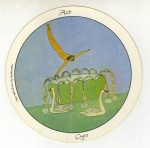(Prologue: I’ve got first-hand experience that a real understanding of the laws of karma can substantially change our lives for the better. I created this weblog to share information and personal experience with others. May it be beneficial!)
You can’t sprinkle the perfume of happiness on others without getting a few drops on yourself. <source: Anon>
There are so many expressions we use around the heart, e.g. “from the bottom of my heart,” “heartfelt,” “broken-hearted,” “heart of stone,” “won your heart,” “wear your heart on your sleeve,” “pour out your heart,” “lose your heart,” “a heart of gold,” “straight from the heart,” “the heart of the matter,” to name just a few.
It became important for me, during the past year of dangerous living, to keep a record, so that I wouldn’t have to experience it again. I offer “the heart of the matter” in this “Heart Day” webpost.
While my dream <please click here for details of dream> of February 03, 2012 sounds like a piece of erotica from a “cheap” romantic novel, I discovered during my year of dangerous living that there were two levels of meaning:
- The outer meaning seemed to be that I had issues around romance [the heart] that I had to resolve; and
- The inner meaning was that, unbeknowns to me, I had become somewhat numb, keeping feelings at bay. I was nesting in a cozy cocoon. A cocoon where I was not aware that I had been experiencing memories of feelings, not actual feelings themselves. A cocoon where I felt settled and happy. I had come to certain conclusions about my life. I had “made my peace” with them.
I needed a shock to wake me up.This dream, with its sexual content, provided that shock.
So the stage was set for some sort of revolution within my being.
General Level:
The most important thing I learned in my year of dangerous living was this:
Feeling is part of being human. In our aggressive and speedy society, we seem to have forgotten that. But while we neither have to indulge in nor repress our feelings — both of which can be dangerous — a courageous person touches in with them. Touch in with their energetic quality at the pre-thought level. (Click here for more information on this subject.)
…the intelligent way of working with emotions [that “is different from and in contrast to the usual approach of suppressing them or acting them out”] is to try to relate with their basic substance, the abstract quality of the emotions, so to speak. The basic “isness” quality of the emotions, the fundamental nature of the emotions, is just energy. And if one is able to relate with energy, then the energies have no conflict with you.They become a natural process. <source: Chogyam Trungpa Rinpoche: The Myth of Freedom and the Way of Meditation; publ. Shambhala Dragon Editions; 1976; Chapter IV, section 1>
To keep in touch with some basic sanity I bracketed the year of February 03, 2012 to February 02, 2013 with a collection of webposts that I called my Relationship Series. They provide a record of what I was learning, week-by-week, month-by-month:
Your task is not to seek for love, but merely to seek and find all barriers within yourself that you have built against it. <source: poet Rumi>
We have a choice: we can either hang onto our habitual patterns. Or we can step into freshness. (Please click here for more on this subject.)
Specifics:
To repeat, the record I kept through my webposts helped me to review this past year of crisis so that I wouldn’t have to experience it again. I offer some specifics. May they benefit someone besides myself: Read the rest of this entry »



